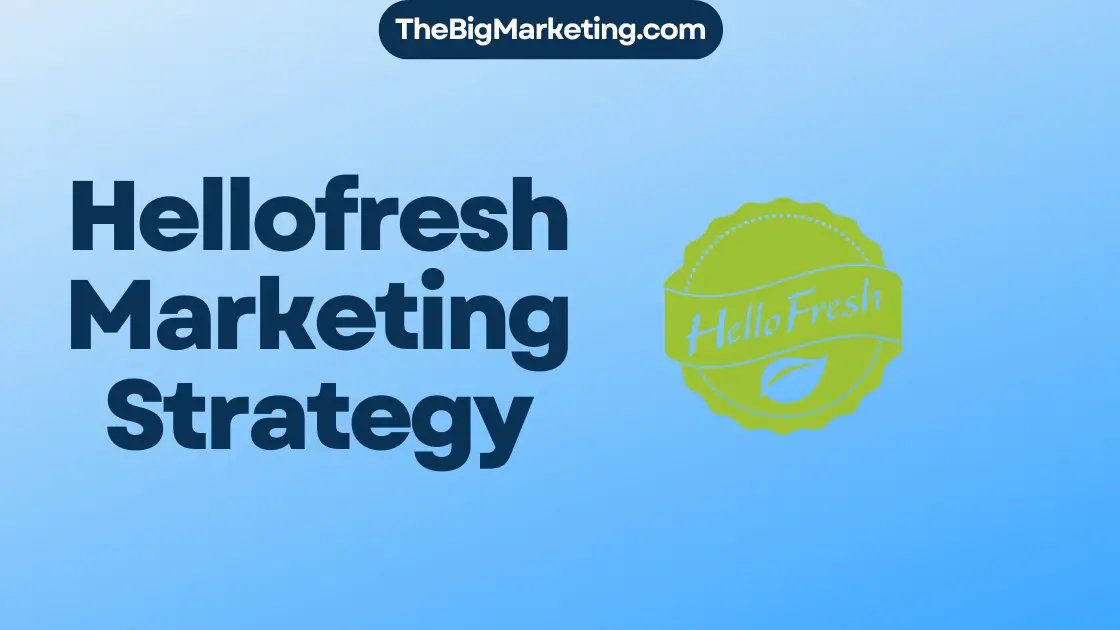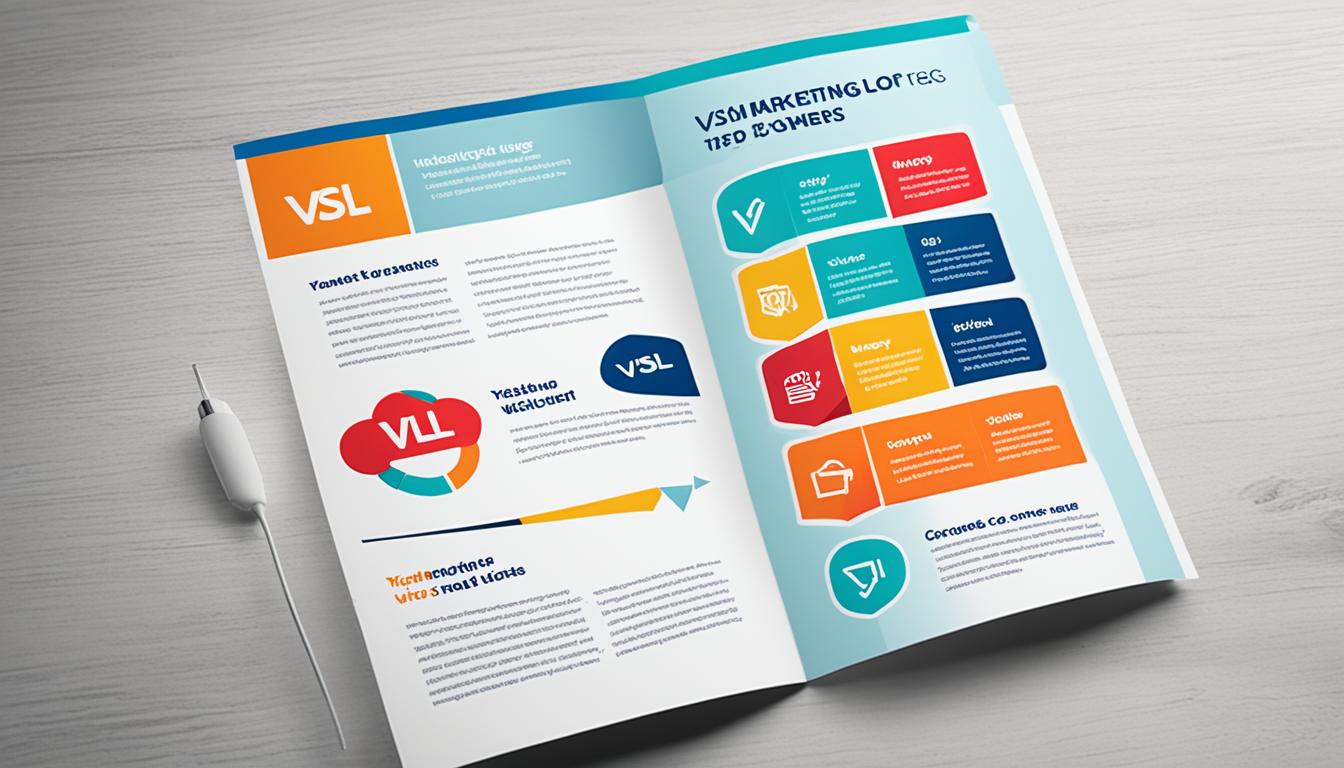Dove, a personal care brand owned by Unilever, has become synonymous with its successful branding strategy that focuses on targeting specific demographics and challenging traditional beauty norms. With a primary target audience of women aged 18 to 35 who prefer natural beauty products, Dove has aced the art of brand positioning and consumer engagement.
The brand’s journey began with its evolution in advertising throughout the decades. In the 1950s, Dove ads emphasized the moisturizing qualities of its soap. In the 1970s, the focus shifted to anti-aging benefits. In recent years, Dove’s ads have championed body positivity and self-acceptance, featuring real women of diverse body sizes, ages, and backgrounds.
One of Dove’s most impactful campaigns, “Real Beauty,” was launched in 2004. This campaign aimed to challenge traditional beauty standards and encourage women to embrace their unique selves. It featured women of all shapes, sizes, and ages, sparking discussions on beauty standards and women’s portrayal in media. The campaign significantly impacted the beauty industry and positioned Dove as a socially conscious brand.
Dove’s pricing strategy is another element that has contributed to its success. The brand offers high-quality products at affordable prices, attracting a wide range of customers while maintaining its brand image. Additionally, Dove’s marketing mix includes product strategy, pricing, distribution, and promotion to effectively meet and connect with its target market.
Dove’s advertising and marketing campaigns have been instrumental in promoting self-acceptance and body positivity. By embracing natural beauty and celebrating diverse women, Dove has sparked meaningful discussions on beauty standards and encouraged women to redefine their perception of beauty.
Through its “WHAT WOMEN WANT” campaign focusing on women’s hair care needs, Dove experienced a 54% increase in online visits in India. By leveraging SEO strategy and engaging over 1.2 million people with their hair care content, Dove showcased its commitment to meeting consumers’ needs and preferences.
With its comprehensive branding strategy and dedication to fostering body positivity, Dove has positioned itself as a socially conscious brand. The impact of the “Real Beauty” campaign continues to resonate, challenging unrealistic beauty ideals and building a loyal customer base.
Key Takeaways:
- Dove primarily targets women aged 18 to 35 who prefer natural beauty products.
- The brand’s advertising strategy has evolved over time, embracing different aspects of beauty.
- The “Real Beauty” campaign aimed to challenge traditional beauty standards and featured diverse women.
- Dove’s pricing strategy focuses on providing high-quality products at affordable prices.
- The brand’s marketing mix includes product strategy, pricing, distribution, and promotion.
Dove’s Target Audience and SEO Case Study
Dove, known as the #1 dermatologist recommended brand in the United States, Canada, and France, has strategically targeted women aged 18 to 35 as its primary audience. Recognizing the growing demand for natural beauty products among this demographic, Dove has successfully positioned itself as a trusted provider of high-quality, skin-friendly products.
To effectively engage its target audience, Dove has implemented a robust social media engagement strategy. Leveraging platforms like Facebook and Twitter, the brand has embraced smart ads, promotions, and content that resonate with women aged 18 to 35. By fostering a genuine connection with its audience, Dove has been able to increase brand loyalty and win over customers who prioritize natural beauty and self-care.
A noteworthy example of Dove’s successful SEO strategy is the “WHAT WOMEN WANT” campaign launched in India. Recognizing the unique hair care needs of Indian women, Dove produced engaging content that addressed their concerns and aspirations. By optimizing their website for keyword analysis and posting relevant and valuable content, Dove witnessed a remarkable 54% increase in online visits.
By integrating SEO principles into their overall marketing strategy, Dove not only reached its target audience effectively but also established a strong presence in the digital landscape. Understanding the importance of audience connection, Dove ensures that its brand message aligns with the values and aspirations of women aged 18 to 35.
| Platform | Age Group | Percentage of Users |
|---|---|---|
| 25-34 | 31.2% | |
| 35-44 | 15.9% | |
| 45-54 | 7.9% | |
| 25-34 | 38.5% | |
| 18-24 | 17.1% | |
| 25-49 | 20.7% | |
| 50+ | 17.1% |
Dove’s active social media presence is a testament to their commitment to engaging their target audience effectively. On Instagram, their #ShowUs campaign posts receive an average of 1,500 to 5,000 likes and generate fewer than 100 comments. Similarly, their Twitter posts receive about 2 to 6 comments, 10 or fewer retweets, and approximately 20 likes.
Over the years, Dove has witnessed substantial growth in their social media following. On Instagram, their followers increased from 575,474 in October 2020 to 759,000 in October 2022. On Twitter, their followers decreased slightly from 189,836 in October 2020 to 187,000 in October 2022. These numbers reflect Dove’s continuous efforts to connect with their target audience and maintain an active and engaged online community.
Evolution of Dove’s Advertising Strategy
Since its entry into the U.S. market in 1957, Dove has continually evolved its advertising strategy to align with changing consumer preferences and societal values. The brand initially emphasized the mildness and moisturizing quality of its Dove ‘beauty bar’. However, in the late 1960s, Dove became a trailblazer by featuring ‘real women’ in its advertising campaigns, challenging the industry’s narrow beauty standards.
A pivotal moment for Dove came in 1991 with the ‘Litmus test’ campaign, which highlighted the low alkalinity and pH neutrality of Dove compared to other soaps. This campaign showcased Dove’s scientific superiority and set the stage for future comparative advertising endeavors.
In 1995, Dove expanded its product offering beyond the cleansing bar category and introduced moisturizing bodywash, tapping into the growing demand for skincare products.
Ogilvy & Mather, a renowned advertising agency, played a significant role in shaping Dove’s marketing strategies throughout the years. Handling the Dove account in both the U.S. and Canada, Ogilvy & Mather helped position Dove as a brand that celebrates diversity and promotes body positivity.
One of Dove’s landmark campaigns was the “Evolution” campaign, launched in 2006. The viral success of this campaign, which reached over 40,000 views on its first day on YouTube and garnered 1.7 million views within a month, propelled Dove into the spotlight.
The “Evolution” campaign garnered an estimated $150 million worth of media exposure and drove double-figure growth in product sales for Dove. This success also translated to Unilever, Dove’s parent company, experiencing a significant rise in overall sales.
Awarded two Cannes Lions Grand Prix in the Film category, the “Evolution” campaign not only revolutionized web-based advertisements but also inspired other brands to celebrate natural beauty in their campaigns, including Nivea’s “Beauty is…”.
Impact on Consumers
The positive reception and impact of the “Evolution” campaign were further demonstrated by the sold-out workshops that Dove organized. This campaign’s success highlighted the potential of viral marketing and the influential role of digital platforms in amplifying a brand’s message.
Dove’s ongoing commitment to challenging beauty stereotypes is evident through campaigns like “Onslaught” and “Amy”. Additionally, the brand has established the Dove Self-Esteem Project, which focuses on promoting body confidence among young people.
These initiatives, rooted in Dove’s advertising strategy, aim to address the reality that only 2% of women consider themselves “beautiful,” while 72% perceive their beauty as “average.” Furthermore, a significant 68% strongly agree that the media and advertising set unrealistic beauty standards that most women can’t achieve.
Dove has actively responded to these concerns by championing body positivity and showcasing women of diverse physical attractiveness – shape, and size. This approach resonates with 75% of women who wish that the media would do a better job portraying such diversity.
To achieve its goals effectively, Dove strategically allocates its marketing budget, investing 60% in building its brand and 40% in standard ad campaigns to drive sales. This balanced approach has paid off, as Dove has received significant free marketing coverage valued at $150 million through word-of-mouth discussions about its impactful campaigns.
As Dove’s advertising strategy continues to evolve, the brand’s commitment to promoting body positivity and challenging beauty stereotypes remains at the core. Dove has proven that by embracing diverse representations of beauty and leveraging the power of digital platforms, a brand can create a positive impact while achieving commercial success.
Dove’s Marketing Mix Analysis
In order to maintain its position as a leading personal care brand, Dove implements a well-rounded marketing mix strategy that encompasses several key elements: product strategy, pricing strategy, distribution strategy, and promotion strategy. By carefully crafting each aspect of its marketing mix, Dove is able to effectively reach and connect with its target audience, driving brand loyalty and ensuring continued success in the highly competitive industry.
Product Strategy
Dove offers an extensive range of products tailored to meet the diverse needs of its customers. From beauty bars and body washes to hair care products, deodorants, skin care products, baby care products, and specialty items, Dove has established itself as a trusted provider of high-quality personal care solutions. By continuously innovating and expanding its product offerings, Dove maintains relevance in the market and secures its position as a leader in the industry.
Pricing Strategy
Dove positions itself as a premium brand, leveraging a value-added pricing policy. While its prices may be slightly higher compared to some competitors, Dove justifies the premium by offering superior quality and effectiveness. Additionally, Dove implements tiered pricing strategies within its range of products to cater to various consumer segments. This approach allows Dove to appeal to a wide range of customers, from budget-conscious individuals to those seeking luxurious and indulgent personal care experiences.
Distribution Strategy
To ensure widespread availability of its products, Dove has established an extensive distribution channel that spans nearly eighty countries. With partnerships involving at least two thousand five hundred stockists, Dove is able to reach customers through supermarkets, drugstores, and convenience stores worldwide. In addition to traditional retail channels, Dove has also expanded its online presence, making its products easily accessible to a broader audience.
Promotion Strategy
Dove emphasizes the power of emotional advertising, celebrity endorsements, and social media engagement as key elements of its promotional strategy. By connecting with consumers on a deeper emotional level and promoting messages of inclusivity and body positivity, Dove builds a strong brand image and fosters loyalty among its target audience. Dove frequently runs promotional campaigns that offer discounts, multi-packs, and value bundles to encourage brand loyalty and attract budget-conscious consumers.
Dove’s marketing mix analysis highlights the brand’s commitment to delivering high-quality products, setting competitive prices, ensuring wide availability, and engaging consumers through emotional advertising. By refining and optimizing its marketing mix, Dove continues to thrive in the global market, connecting with customers and empowering them to embrace their natural beauty.
Dove’s “Real Beauty” Campaign
In 2004, Dove launched its groundbreaking “Real Beauty” campaign, challenging beauty norms and promoting self-acceptance. This campaign had a profound social impact, influencing women’s perception of beauty and self-esteem. By featuring real women with diverse backgrounds, ages, and body sizes, Dove aimed to redefine beauty standards and encourage women to embrace their unique qualities.
Through the “Real Beauty” campaign, Dove showcased the beauty of women who are often underrepresented in the media, including transgender women, Black women with vitiligo, mothers, women embracing aging, hijab-wearing women, and those with Alopecia. The campaign aimed to empower and provide visibility to these women, fostering a sense of inclusivity and celebrating their uniqueness.
The campaign struck a chord with consumers, as it resonated with their desires for authentic representation and self-acceptance. The shift towards inclusivity and challenging traditional beauty norms has gained traction, leading to increased engagement with brands that embrace diverse beauty ideals. Consumer sentiment towards beauty products that align with values of self-acceptance and diversity has shown a positive trend, reflecting the cultural shift in embracing individuality.
The “Real Beauty” campaign not only influenced societal perceptions but also had a significant impact on Dove as a brand. It garnered extensive media coverage and generated conversations on social media. The campaign’s effectiveness is evident in the video views on YouTube, with the first two videos of the Dove “Campaign for Real Beauty” surpassing 35 million views each within two weeks of their release.
The campaign’s success also translated into business growth for Dove. The brand, which began as a $200 million soap brand in the early 1990s, is now valued at nearly $4 billion. The “Real Beauty” campaign contributed to this growth, increasing brand loyalty and attracting consumers who resonate with Dove’s message of self-acceptance and diverse representation.
In addition to its impact on women’s perception of beauty, the “Real Beauty” campaign also led to positive social change. Dove aimed to reach 15 million girls globally by 2015 through collaborative programs with organizations like the Girl Scouts of the USA. The campaign’s efforts have been estimated to have an impact 30 times greater than their expenditure, highlighting the far-reaching effects of promoting self-acceptance and challenging beauty norms.
Overall, Dove’s “Real Beauty” campaign has made a lasting impression on society, promoting self-acceptance, celebrating diversity, and challenging traditional beauty standards. Its positive social impact, along with business growth, demonstrates the power of campaigns that align with values such as inclusivity and authentic representation.
| Statistics | Data |
|---|---|
| Percentage of women calling themselves “beautiful” | 2% |
| Percentage of women finding their beauty “average” | 72% |
| Percentage of women strongly agreeing that the media and advertising set an unrealistic standard of beauty | 68% |
| Percentage of women wishing that the media did a better job portraying women of diverse physical attractiveness | 75% |
| Value of free marketing coverage Dove received through word of mouth | $150 million |
| Value of Dove’s brand | $5.1 billion |
| Value of Dove’s brand growth | Nearly $4 billion |
| Views received by the first two videos of the Dove “Campaign for Real Beauty” on YouTube within two weeks | Over 35 million each |
| Estimated unpaid exposure value generated by the Evolution ad showcasing the effort behind creating the “model look” | Over $150 million |
Implications of Dove’s Real Beauty Campaign
The Dove Real Beauty campaign has had significant implications for the beauty industry and society as a whole. By challenging traditional beauty ideals, Dove has made a lasting social impact and built a loyal customer base.
Prior to the campaign, research data indicated that only 2% of women worldwide described themselves as beautiful. This campaign aimed to change that perception by promoting self-acceptance and celebrating the diversity of real women.
The campaign attracted 1.5 million visitors to Dove’s website, showcasing the power of their messaging. Additionally, it generated free media exposure valued at 30 times the initial campaign spend, indicating the widespread interest and discussion it sparked.
Furthermore, Dove’s revenue increased by 10% in just one year following the Real Beauty campaign, demonstrating the positive impact on sales and brand perception.
The campaign’s focus on challenging beauty ideals and promoting self-acceptance has resonated with women of all ages. Studies show that by the time girls turn 17, 78% are unhappy with their bodies. Dove’s campaign aims to change this narrative and promote a healthier body image.
Magazines targeting women have often been criticized for their impact on body image, with 70% of female college students reporting feeling worse about their bodies after looking at such magazines. Dove’s Real Beauty campaign has challenged these harmful influences and provided a more inclusive perspective on beauty.
One of the campaign’s key achievements was the creation of a loyal customer base. Dove products are positioned as affordable and accessible, available at various retail outlets like Target, Walmart, and convenience stores. The brand’s commitment to promoting self-acceptance and challenging beauty norms has resonated with consumers, leading to repeat purchases and increased brand loyalty.
Moreover, the campaign has influenced the beauty industry at large. Dove’s Shocking Nation campaign, featuring eight real women dressed in their underwear, received significant attention and sparked public dialogue. The campaign pushed other brands to value diversity and change old beauty norms, creating a ripple effect throughout the industry.
Dove’s social impact extends beyond its marketing campaigns. The company has established the Dove Self Esteem Fund to support efforts in enhancing self-esteem in young girls. The fund has garnered support through purchases, making a tangible difference in boosting self-esteem and confidence among young girls.
The Dove Real Beauty campaign has had far-reaching implications, both within the beauty industry and society in general. By challenging beauty ideals and promoting self-acceptance, Dove has made a lasting impact, building a loyal customer base and inspiring positive change.
Dove’s Advertising and Marketing Campaign Strategies
Dove has a long history of creating impactful and innovative advertising campaigns that challenge beauty standards and promote body positivity. The brand’s advertising strategies have successfully engaged with its target audience and established a strong emotional connection.
One of Dove’s most notable advertising campaigns is the “Real Beauty Sketches” campaign. This campaign aimed to highlight the gap between how women perceive themselves and how others see them. The campaign featured a forensic sketch artist who drew portraits of women based on their self-descriptions and descriptions provided by strangers. The sketches based on strangers’ descriptions were often more flattering and accurate, revealing the critical need for women to recognize their natural beauty. The campaign resonated with millions of viewers and garnered over 50 million views within just 12 days of its release.
Another significant aspect of Dove’s advertising strategy is its focus on social causes and empowering women. The “Campaign for Real Beauty” features real women of diverse body shapes, sizes, and ethnicities, challenging traditional beauty standards. This campaign aims to promote body positivity, boost self-esteem, and encourage women to embrace their unique beauty. By portraying real women in their advertisements, Dove successfully communicates the message that every woman is beautiful in her own way.
In addition to its thought-provoking campaigns, Dove has leveraged digital and social media platforms for its marketing efforts. The brand’s digital marketing strategy includes elements such as print advertisements, television commercials, and social media campaigns. By utilizing these various channels, Dove effectively reaches its target audience and maximizes brand exposure. The company’s digital marketing techniques, along with consistent messaging across different platforms, have greatly contributed to increased brand awareness and loyalty.
Dove’s commitment to community engagement and addressing societal pressures is evident through initiatives like the #DoveSelfEsteemProject. This campaign encourages individuals to appreciate their natural beauty, promoting self-esteem and body confidence. Dove also conducts extensive research to better understand perceptions of beauty. In a survey of 3,000 women from ten different countries, Dove found that only 2% considered themselves attractive. Such insights drive Dove’s efforts to challenge beauty standards and promote a healthier and more inclusive definition of beauty.
Despite facing criticism and backlash for certain advertisements, such as the 2011 ad featuring three women with different skin tones and the racially insensitive body wash commercial in 2017, Dove remains committed to its mission of promoting real beauty and empowering women. The brand continuously learns from these experiences and strives to improve its messaging and creative approaches.
| Dove Advertising Campaign | Results/Impact |
|---|---|
| Real Beauty Sketches | Over 50 million views within 12 days of release |
| Real Beauty campaign | Nearly doubled sales within the first ten years of launch |
| #Speak Beautiful Partnership | Increased brand sentiment by 17% |
Dove’s Marketing Mix Analysis
Dove, renowned for its personal care products that celebrate natural beauty, implements a comprehensive marketing mix strategy to effectively position and promote its offerings. By examining Dove’s product strategy, pricing strategy, distribution strategy, and promotion strategy, we gain valuable insights into the brand’s success in the highly competitive personal care industry.
Product Strategy
Dove offers a wide array of products that cater to various personal care needs. From Dove Beauty Bars, Body Washes, and Hair Care Products to Deodorants, Skin Care Products, Baby Care, and Specialty Products, Dove ensures that its diverse consumer base has access to high-quality products that align with their preferences and requirements.
Pricing Strategy
Dove positions itself as a premium brand and adopts a pricing strategy that reflects its quality and brand image. While Dove’s prices may be slightly higher compared to its competitors, the brand’s loyal customer base recognizes and values the superior quality, making it a worthwhile investment.
Distribution Strategy
Distribution is a crucial element of Dove’s marketing mix strategy. The brand focuses on extensive retail distribution, ensuring its products are readily available in various channels such as supermarkets, drugstores, and convenience stores, among others. Additionally, Dove embraces e-commerce platforms, allowing customers to conveniently purchase its products online, expanding its reach to a global consumer base.
Promotion Strategy
Dove’s promotion strategy revolves around emotional advertising and engagement. The brand leverages emotional appeals to resonate with its target audience, emphasizing themes of beauty, body positivity, inclusivity, and empowerment. Celebrity endorsements, social media engagement, and print advertisements also play significant roles in Dove’s promotional efforts, enabling the brand to effectively communicate its values and engage with consumers on a deeper level.
By meticulously crafting and executing its marketing mix strategy, Dove has achieved remarkable success in the personal care industry. Its commitment to authenticity, inclusivity, and promoting real beauty has resonated with its target audience, propelling the brand to global recognition and inspiring millions around the world.
A Closer Look at Dove’s Marketing Mix
| Marketing Mix Element | Description |
|---|---|
| Product Strategy | Dove offers a diverse range of personal care products that cater to various needs, including skincare, haircare, and body care. |
| Pricing Strategy | Dove positions itself as a premium brand, justifying slightly higher prices through its superior quality and brand image. |
| Distribution Strategy | Dove focuses on extensive retail distribution, ensuring wide availability in supermarkets, drugstores, and convenience stores. The brand also utilizes e-commerce platforms to reach a global consumer base. |
| Promotion Strategy | Dove’s promotion strategy includes emotional advertising, celebrity endorsements, social media engagement, and print advertisements to effectively engage with its target audience. |
Dove’s marketing mix analysis showcases the brand’s strategic approach to position and market its products. Through a strong product portfolio, premium pricing, extensive distribution network, and impactful promotion strategies, Dove has successfully established itself as a leading brand in the personal care industry.
Dove’s Competitive Analysis
When it comes to the beauty industry, Dove stands out from its competitors through its unique brand positioning and inclusive representation. Unlike other brands that promote unrealistic beauty ideals, Dove embraces positive self-image and celebrates diverse beauty ideals. This approach has helped Dove build a loyal customer base and gain a competitive advantage in the market.
Dove’s commitment to endorsing realistic beauty standards sets it apart from other brands in the category. By not distorting or visually enhancing images of women, Dove has created a space where women feel represented and empowered. This focus on self-confidence, self-esteem, and ultimate self-acceptance resonates with customers and distinguishes Dove from its competitors.
The brand’s efforts go beyond marketing campaigns. The Dove Self Esteem Project, which focuses on self-esteem education, helps further differentiate Dove from competitors. By addressing the issues of low self-esteem and promoting positive body image, Dove builds brand loyalty and drives a positive social impact.
Customers are willing to pay a higher price for Dove products due to the perceived high value of the brand. With an emphasis on natural beauty, Dove products are positioned to cater to everyday women around the world. Regardless of shape, size, age, or race, Dove promotes a positive and inclusive image of beauty.
In terms of social media presence, Dove has experienced significant growth. Its Instagram follower count has increased by 20% over the last 12 months. The Dove Self Esteem Project hashtag is prominently featured in around 10% of total posts on Dove’s official Instagram account, showcasing the brand’s commitment to its mission. Additionally, the hashtag #letschangebeauty is heavily used by Dove and ranks among the top Instagram hashtags in terms of usage and engagement.
When comparing Dove to its competitors, such as Nivea, Dove demonstrates a larger reach on social media platforms. However, Dove’s engagement and video views may be lower. On Instagram, Dove outperforms Nivea with higher engagement, more frequent posts, and a larger follower count. On TikTok, Dove’s follower count has skyrocketed in the past 12 months, indicating the brand’s growing presence and potential for virality.
Overall, Dove’s competitive analysis reveals its strong market position and the success of its unique brand positioning. By embracing inclusive representation, promoting positive self-image, and challenging beauty norms, Dove has created a powerful and influential brand that resonates with consumers worldwide.
| Dove | Nivea | |
|---|---|---|
| Social Media Reach | Larger reach | Smaller reach |
| Social Media Engagement | Higher engagement | Lower engagement |
| Video Views | Lower video views | Higher video views |
The Impact of Dove’s Real Beauty Campaign
The Dove Real Beauty campaign, launched in 2004, has had a profound impact on the beauty industry and beyond. By celebrating diverse beauty and challenging narrow beauty standards, Dove sparked a global conversation and controversy, bringing the issue of unrealistic beauty ideals to the forefront. The campaign’s impact extends to cultural change, positive brand image, and empowering women to embrace their unique beauty.
With the Real Beauty campaign, Dove not only captivated audiences worldwide but also inspired other brands to rethink their approach to beauty advertising. This groundbreaking initiative highlighted the importance of inclusivity and representation in the industry, setting a new standard for marketing campaigns. As a result, the beauty industry has become more diverse and inclusive, honoring women of all shapes, sizes, ages, and ethnicities.
The campaign’s impact goes beyond marketing. Dove’s Real Beauty campaign has brought about a cultural shift in how society perceives beauty. By showcasing a wide range of diverse women in their advertisements, Dove challenged the notion that there is only one ideal standard of beauty. This has led to increased acceptance and appreciation of different body types and features, promoting a healthier and more inclusive beauty culture.
Through its Real Beauty campaign, Dove has cultivated a positive brand image that resonates with consumers worldwide. By aligning itself with the values of inclusivity, empowerment, and self-acceptance, Dove has positioned itself as a socially conscious brand that genuinely cares about its customers. This has resulted in increased brand loyalty and a strong emotional connection with consumers.
In addition to its impact on the beauty industry, Dove’s Real Beauty campaign has also paved the way for other social initiatives. The Dove Self-Esteem Project, for example, has reached over 60 million young people in more than 140 countries, promoting body confidence and positive self-image. Dove’s commitment to social change has garnered accolades and awards, further solidifying its reputation as a leader in marketing excellence and innovation.
| Impact Areas | Key Findings |
|---|---|
| Beauty Industry | The Real Beauty campaign revolutionized beauty advertising, encouraging other brands to embrace diversity and inclusivity. This has led to a significant cultural shift in beauty standards. |
| Cultural Change | The campaign challenged narrow beauty ideals and promoted acceptance of diverse beauty, fostering a more inclusive society. |
| Positive Brand Image | Dove’s Real Beauty campaign positioned the brand as socially conscious and customer-centric, resulting in increased brand loyalty. |
| Empowerment | The campaign empowered women to embrace their unique beauty, fostering self-acceptance and confidence. |
Conclusion
Dove’s branding strategy, exemplified by its “Real Beauty” campaign and comprehensive marketing mix, has had a profound and lasting impact on the beauty industry. By focusing on inclusive representation and challenging societal beauty norms, Dove has successfully built brand loyalty and fostered meaningful conversations about beauty. The brand’s commitment to authentic storytelling and pushing for societal change sets it apart as a champion of self-acceptance and empowerment.
Through its emotionally-relatable content, high production quality, and customer-centric approach, Dove has consistently delivered powerful brand messages that resonate with its audience. By showcasing real-life stories and inspiring through storytelling instead of direct product promotion, Dove has created a strong sense of belonging among customers, leading to increased brand loyalty and support.
Implementing a value-added marketing strategy, Dove has not only positioned itself as a market leader but also garnered respect and support from consumers. By aligning its brand purpose with consumers’ beliefs and addressing the need for greater inclusivity and positive beauty experiences, Dove has successfully positioned itself as a brand that drives positive change and fosters self-esteem.
As the beauty industry continues to evolve, Dove’s branding strategy will continue to shape the future of this sector. With its focus on inclusivity, societal impact, and challenging traditional beauty standards, Dove will remain at the forefront of driving positive change and inspiring people to embrace their own unique beauty.







